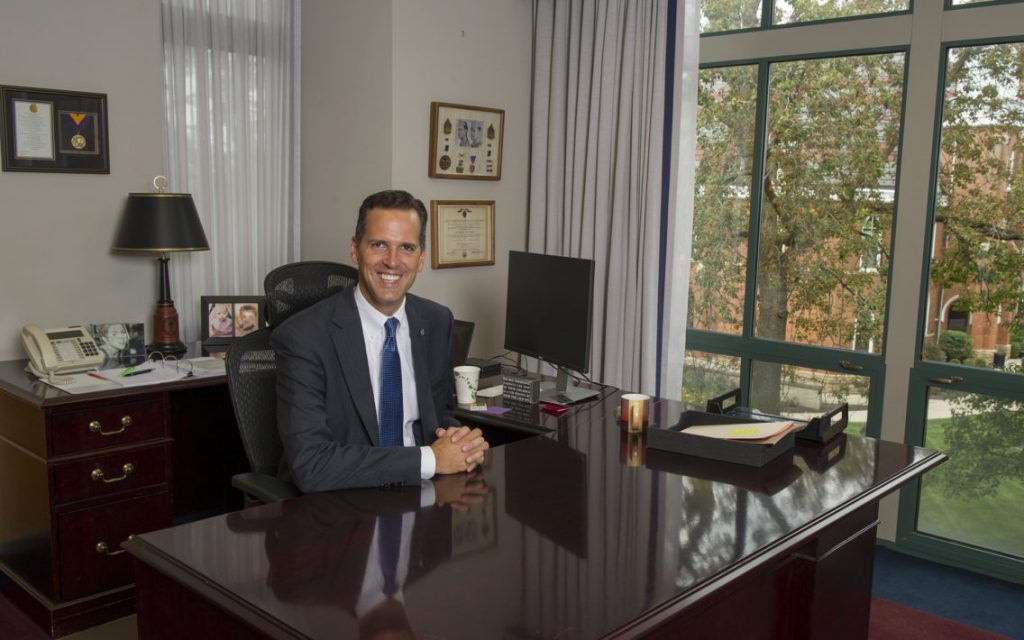Otterbein President Op-Ed: Boost Online Access, Affordability in the College Setting
Posted May 26, 2020
It is a good time for prognosticating. With nothing like the COVID-19 pandemic having happened in our lifetimes, and no tried-and-true road map for the future, every prediction can seem just as likely as the next, regardless of how wild.

Among the predictions now that might seem wild is that the pandemic spells the end of higher education as we know it, with online education poised for world domination. To call it a wild idea would be wrong. The logic is sound, with concerns about social distancing paramount, the widespread understanding that online school and work is possible (if not always fun or easy) and the likelihood of an economic downturn putting costs at the top of everyone’s mind.
Perhaps a less wild prediction might be this: Both traditional and online higher education will be forever changed by the pandemic, with each drawing from the other to serve increasingly savvy, outcome-oriented and budget-conscious students. Here are some more predictions for that future.
Anyone believing the current ubiquitous use of online education is so well-received that no one will want to let it go simply isn’t doing online education. Our experience at Otterbein is that students are frustrated being at home and eager to regain the independence and peer companionship of campus life. There is no substitution for the growth that comes from leaving home to assume responsibility for one’s day-to-day responsibilities and being able to, live and in-person, meet, learn from and grow with one’s peers. Residential campuses are not transactional the way an online experience is, but are transformational because they are immersive. Purely online education can never match that.
So if “in real life” is traditional colleges’ differentiator, they are going to have to double-down on it. It will take rediscovering what once seemed obvious — being together in person. Everything about the educational, residential and co-curricular experience of on-campus life must be more intentional. If athletic teams, fraternities, sororities, clubs and organizations are what will differentiate us, then the learning that occurs within them must be clearly articulated, tracked and integrated into every student experience.
Now is the time to rethink ideas that have been passed down through generations, without much thought. We lecture because it’s what we do, use multiple-choice exams because they’re easy to grade and still schedule our year-round planting and harvesting. The pandemic teaches that what came before is no longer gospel.
For example, videos and other asynchronous assets likely do as well (or better) than lectures. Where in-person experiences excel is filling in gaps in the understanding unique to each student, something that cannot be done as easily online. Then, instructors can determine if students should take parts of courses again or skip ahead to other courses, or even their advanced, later portions. A blend of online and in-person learning experiences can make that possible — and then be continuously rethought and revised and improved.
Higher education’s teetering business model is now in pieces on the floor, broken beyond repair. A few institutions with billion-dollar endowments might plow ahead unfazed, but most must now face market realities. That means putting access and affordability first, which especially benefits traditional underserved groups of students. There will not be enough students to go around who meet the ideals of magazine rankings (high test scores, high ability to pay), so campuses will inevitably become more authentically inclusive and diverse.
The democratization of learning will be a change worth celebrating.
I believe unequivocally in learning for the sake of learning, because curiosity always leads to something new. Developing the ability to learn independently and providing a deep and wide general education are invaluable outcomes of a good college education. Traditional colleges fail, however, when they wash their hands of helping students figure out how to apply that which they’ve learned. Higher education and professional development must be synonymous. Internships, applied projects and part-time employment should be integrated into courses and majors, employers should be on campus giving first-year students practical experiences and mid-career professionals should be offered short courses and certificate programs.
If COVID-19 has taught us anything, it is that we are truly all in it together. As we face an uncertain economic future, improving how we prepare for that future (aka — learn) will show that the pandemic’s pain wasn’t in vain. Of course, predictions are cheap, so let’s call this a hope — for us all.
John Comerford is president of Otterbein University.
Column: Boost online access, affordability in the college setting
The Columbus Dispatch
Published May 26, 2020